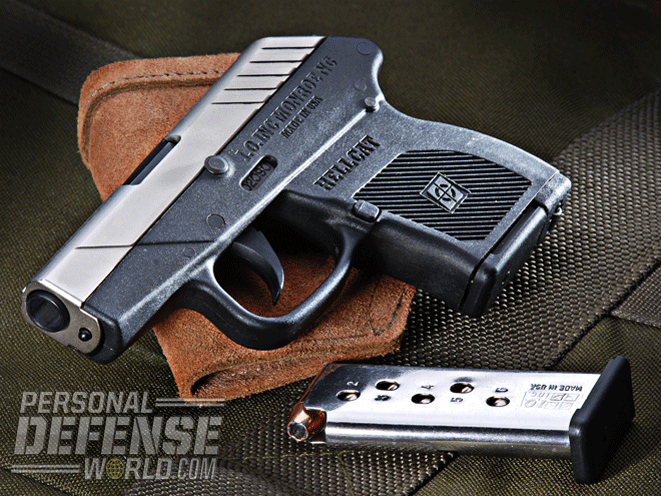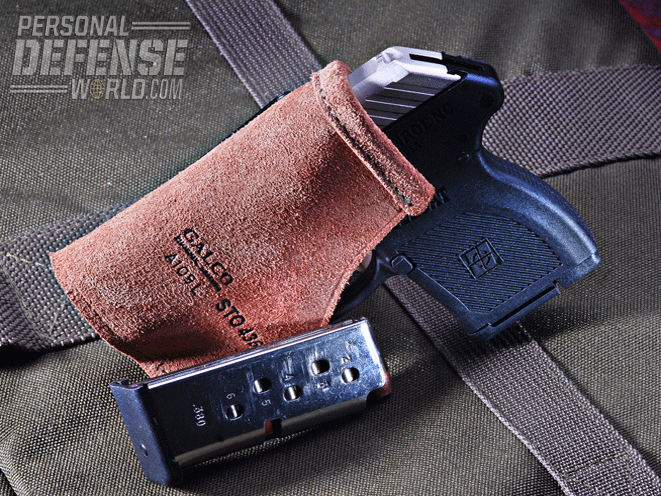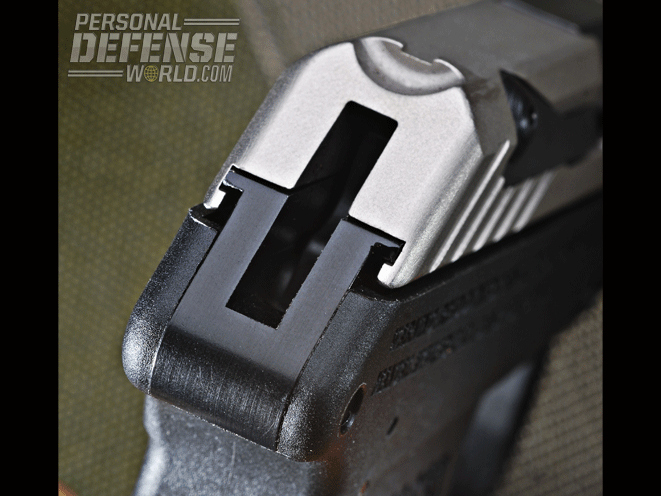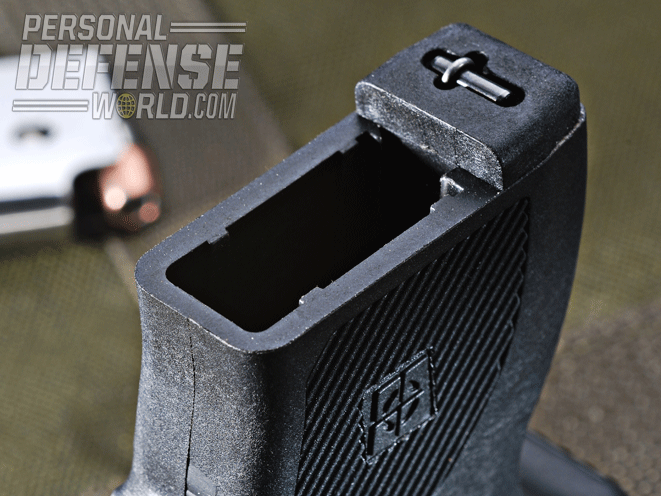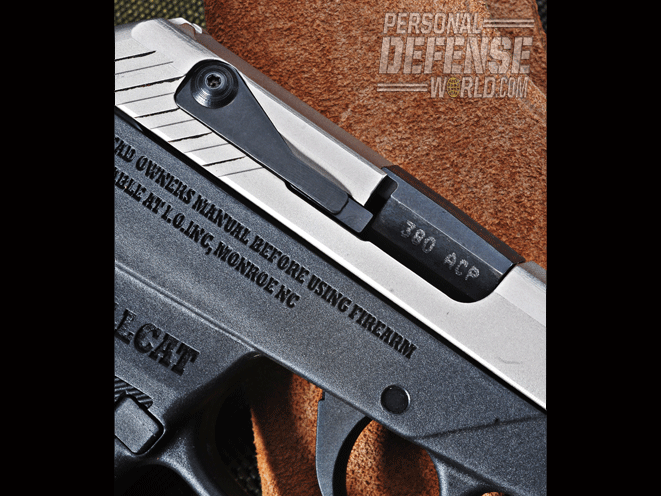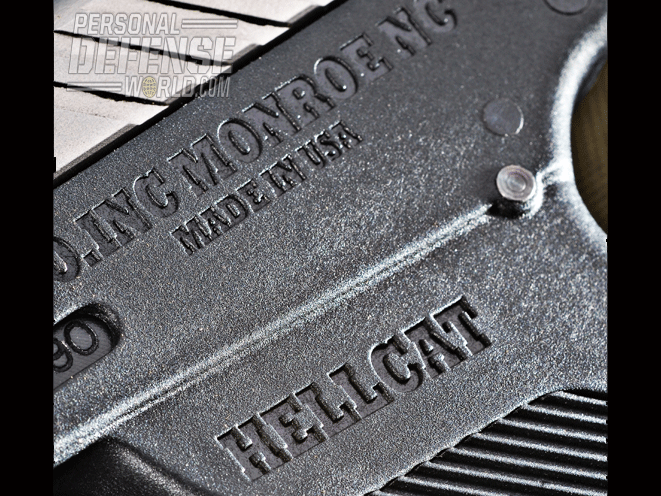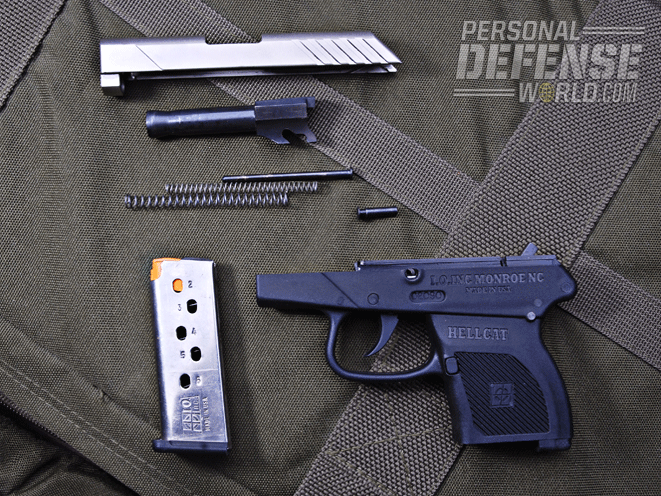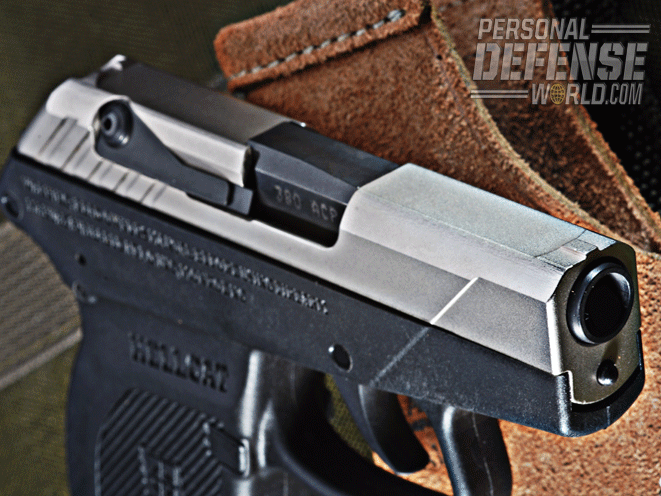With the majority of states now issuing concealed carry permits, easily concealable handguns have been in great demand. Those that applied for their permits thinking that they would carry a custom 1911, Hi-Power or other full-size service gun quickly realized that they are a literal pain in the hip to carry all day. But the thought of going about their business unarmed is equally distasteful.
The template for a successful concealed carry handgun seems to be something pocket size, in a sub-caliber, utilizing a lightweight frame and double-action trigger. The thinner the gun the better for concealed carry, and a design that is snag free is equally important. Using these parameters George Kelgren designed his popular Kel-Tec P3AT, .380 ACP double-action-only semi-autopistol. The gun proved to be so successful that Kel-Tec was in a chronic state of backorder to their distributors. This situation did not go unnoticed by competitors.
Last year, Ruger unveiled their new LCP .380 ACP—a pistol clearly inspired by the innovative Kel-Tec gun. It is easy to see why Ruger would develop a pistol like this, considering the broad popularity of pint-sized .380 ACP pocket pistols these days.
Advertisement — Continue Reading Below
An insatiable demand by the shooting public for an affordable, small, lightweight pocket gun has not waned. I.O. Inc. (formerly Inter Ordnance Inc) is now offering their Hellcat .380 ACP DAO semi-autopistol.
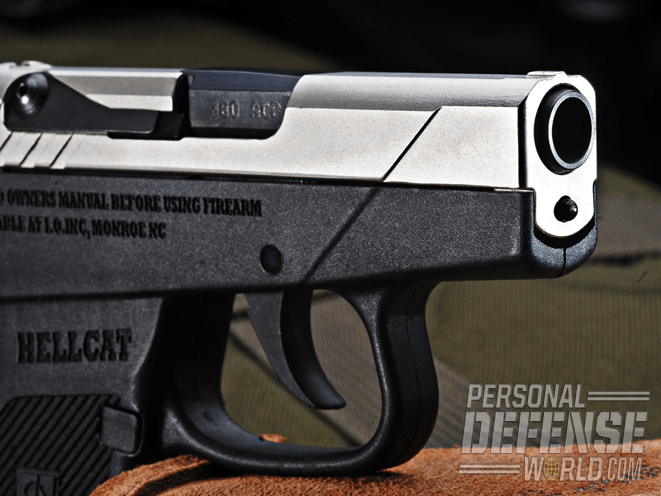
Gun Details
The Hellcat .380 uses a glass-reinforced polymer frame for light weight, just 9.4 ounces with an unloaded magazine, and is completely corrosion free. Both the barrel and slide are machined from 4140 steel. My test sample has a nickel-plated slide, though I.O. Inc. offers a blued slide model as well. The pistol has a capacity of 6+1 rounds and comes with two quality stainless steel magazines.
Advertisement — Continue Reading Below
The Hellcat .380 fires from a locked breech, using a tilting barrel design, meaning the barrel and slide are locked together at the moment of firing. After firing, the barrel and slide recoil to the rear a short distance when the barrel is cammed down from its locked position, and the slide continues to move backward while it extracts the fired cartridge and ejects it. Two recoil springs move the slide forward, where it strips another cartridge from the magazine and chambers it. Guns that utilize a locked breech normally exhibit far less felt recoil than guns that use a simple blowback system.
After a lengthy pull, my test sample’s trigger breaks at about 6.75 pounds. It takes a purposeful pull of the trigger to discharge the gun, and that’s a positive feature for a pistol that does not possess a manual safety. The DAO trigger pull provides a single strike. The slide must be retracted to allow a second attempt. That’s probably a good thing anyway. Why keep attempting to detonate a cartridge that didn’t fire on the first attempt? Better to rack the slide and attempt again with a new cartridge.
The trigger mechanism is actually housed in an aluminum sub-frame that is pinned into the polymer frame. Examining the manual that came with my test gun it mentioned that the gun features a slide hold open device. Try as I might I couldn’t find any evidence of this feature on my gun. When I spoke with I.O. Inc.’s Uli Wiegand, he told me that they dropped this particular feature. “The gun is not a target pistol so you don’t need the hold open feature. It’s just a self-defense pistol, so we decided to make it very easy and reliable.” Accordingly, the slide will not lock back when the last shot is fired, nor can it be locked open to prove that it is unloaded.
Advertisement — Continue Reading Below
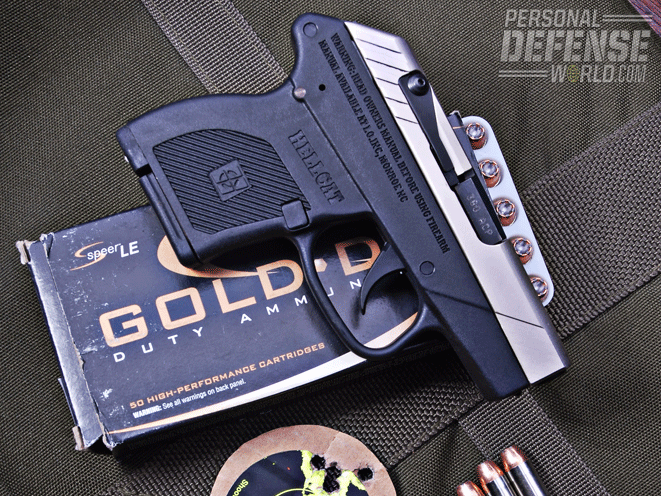
Range Time
Shooting the Hellcat .380 ACP for accuracy proved to be hard, due to the gun’s very low profile sights. While completely snag-free, the front sight is so diminutive that it is hard to pick-up quickly. The rear sight is machined into the side top and is not moveable to adjust for windage. Weigand said, “We talked to lots of people at the NRA convention and the majority of the people said that they would rather have the low profile sights so the gun wouldn’t get stuck in the pocket.” I’d have to concur with him on that point. This is a gun that many people will carry in their pants or coat pockets and will be used at an arm’s length. But, the tiny sights did make it difficult to determine how much mechanical accuracy the gun possesses. In the case of the Hellcat I would have to say that it has more inherent accuracy than I was able to coax from it.
It was awful hard to find the nub of a front sight while shooting on a bright July Arizona day. I did all of my testing by firing offhand at a target just 7 yards away and used 2-inch Shoot-N-C targets. Groups were well centered and measured from a small group of 0.85 of an inch to the largest of 1.75 inches. Despite its light weight, the Hellcat was very easy to control and fire rapidly. I was able to fire 7 rounds in about 3 seconds with all shots landing in the “A” zone of a USPSA target. Wiegand told me that the pistol’s grip is slightly longer than that of the P3AT and LCP and that makes the Hellcat easier to control. I have medium size hands and was able to place the third and ring fingers on the gun’s frontstrap. Reliability with this gun is 100%—it fired every bullet nose profile that I fed it without a bobble.
Advertisement — Continue Reading Below
I’d be remiss, however, if I didn’t mention that this was the second test gun that I received from I.O. Inc. My first test sample experienced failure to extract and eject nearly 50% of the time. When I called to report my findings to I.O.’s Wiegand he asked what the serial number was on the gun. Apparently I was mistakenly shipped an older gun from a production run with bad extractors.
One of the problems that manufacturers experience is being able to control the tolerances of their suppliers’ parts. If their slide supplier cuts the extractor relief too deep or too shallow or the extractor producer makes the part to thick or thin malfunctions are likely to happen. The only way to ensure that tolerances are held to absolute minimum is to produce the part in house.
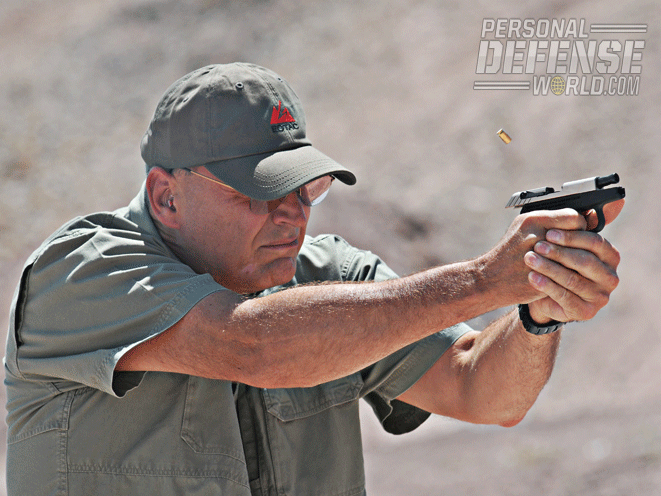
Larry Baucon, I.O. Inc.’s chief engineer, told me, “We had a problem with one of our vendors and the depth of the extractor on the slide. We just spent $20,000 on a tool to make a molded extractor instead of a machined extractor. The 4140 parts will all be exactly the same. Shortly we’ll have our CNC center set up so that we’ll be able to completely machine the slide in house and hold tolerances to our standards.”
Advertisement — Continue Reading Below
The fact that IO Inc. has made the commitment to purchase the machinery necessary to build the Hellcat .380 in house is assuring that they will build a quality, trouble-free gun.
Though we often refer to these small, lightweight semi-autos as pocket guns, it doesn’t necessarily mean that we are advocating carrying the gun in a pocket without a holster. It’s just too easy for these little guns to rotate in the pocket—especially with a polymer frame gun with its heavier steel top end. Use some sort of scabbard that positions the gun so that it can’t move and also covers the trigger so that it can’t accidentally be pulled. I like Galco Gunleather’s Horsehide Front Pocket Holster for this type of carry. I also used a Galco Stow-N-Go Inside-the-Pants Holster with belt clip. It can be worn on the strong side or in the crossdraw position, and its reinforced holster mouth ensures a quick, uninhibited presentation and easy re-holstering. Again, there are many different ways to carry a small pistol but if you put it in your pocket use some sort of holster to make the gun easy to access quickly while carrying safely.
Final Notes
Advertisement — Continue Reading Below
If imitation is the sincerest form of flattery, Kel-Tec’s George Kelgren must indeed be an extremely flattered man. Come to think of it, I guess John Browning would be flattered too if he were alive to see how many different companies were producing copies of his famous 1911 pistol. While the I.O. Inc. may not have originated the design, they are producing an affordable and reliable gun at their North Carolina plant. The new Hellcat will give the concealed carry crowd a viable option for a lightweight, easily concealable semi-autopistol.
Specifications: I.O. Inc. Hellcat .380
|
CALIBER: Advertisement — Continue Reading Below |
.380 ACP |
|
BARREL: |
2.75 inches Advertisement — Continue Reading Below |
|
OA LENGTH: |
5.16 inches |
|
WEIGHT: |
9.4 ounces (empty) |
|
GRIPS: |
Polymer |
|
SIGHTS: |
Fixed low profile |
|
ACTION: |
DAO |
|
FINISH: |
Blued or nickel plated |
|
CAPACITY: |
6+1 |
|
PRICE: |
For More Information
This article was originally published in CONCEALED CARRY HANDGUNS® 2

